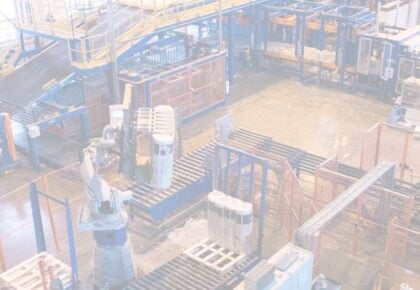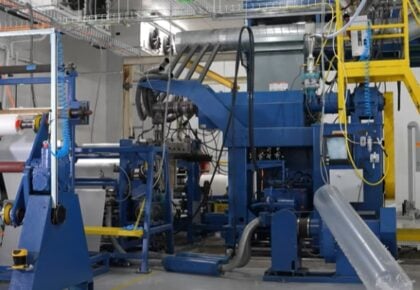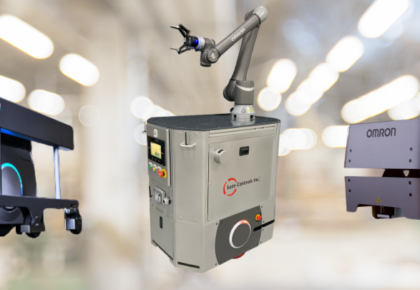How Innovation in Control Panels is Revolutionizing Manufacturing
By Rob Velpel
Control panels orchestrate complex operations with precision and efficiency. They’re the nerve center of any industrial setup, ensuring that everything runs smoothly. But like any technology, control panels haven’t remained static. In the last decade, they’ve undergone a remarkable transformation, driven by innovation in both hardware and software.
In this article, we’ll explore the pivotal role of control panels in manufacturing plants, delve into the groundbreaking innovations of the past ten years, and highlight the significant benefits of upgrading older systems. By the end, you’ll understand how modern control panels can elevate your operations to new heights.
The Backbone of Manufacturing: Understanding Control Panels
The Vital Role of Control Panels
Control panels monitor and manage various machine functions, from starting and stopping motors, regulating speeds to monitoring machine conditions and maintaining safety protocols. They are integral to maintaining productivity, quality, and safety in manufacturing environments.
Why Control Panels Matter
Without control panels, the orchestration of complex manufacturing processes would be nearly impossible. Control panels provide the ability to easily and accurately control machines and can provide real-time data and diagnostics to operators through audible or visual indicators or alarms displayed on HMIs. This allows for immediate intervention if something goes wrong to help ensure minimal downtime and maximum efficiency.
A Decade of Change: Innovations in Control Panels
The Rise of Smart Control Panels
In the past decade, control panels have evolved from basic, manual systems to smart, automated ones. These intelligent systems can process vast amounts of data, offering predictive maintenance and real-time analytics that preemptively address issues before they cause disruptions. In addition, control systems with graphical presentations of historized data allow companies to better understand their machine processes over time which can help shine a light on where to allocate resources to increase productivity and profitability.
Integration of IoT and Control Panels
The Internet of Things (IoT) has revolutionized control panels by enabling interconnected devices to communicate seamlessly. This integration allows for remote monitoring and control, providing unparalleled convenience and efficiency.
Advances in User Interfaces
User interfaces in control panels have seen significant improvements. Touchscreen interfaces with intuitive designs make it easier for operators to interact with complex systems. These interfaces are not only user-friendly but also reduce the training required for new operators.
The Benefits of Upgrading Older Control Panels
Enhanced Efficiency and Productivity
Depending on the control architecture, upgrading control panels that are 10-15 years old and older can lead to significant improvements in efficiency and productivity. Modern control panels offer advanced automation features that streamline operations and reduce manual intervention.
Improved Safety and Compliance
Older control panels may not meet current safety standards. This can lead to an unsafe work environment for employees and can be very costly for the company. Having a risk analysis done on an existing system can show where there are safety inadequacies. Upgrading control hardware to current safety standards ensures compliance with the latest regulations, reduces the risk of accidents and ensures a safer work environment.
Cost Savings Through Predictive Maintenance
Modern control panels come with predictive maintenance capabilities, identifying potential issues before they escalate into costly repairs. This proactive approach can save significant amounts of time and money in the long run.
How to Upgrade Your Control Panels
Assessing Your Current System
The first step in upgrading your control panels is to assess your current system. Identify the limitations and areas where modern technology could make a difference such as replacing obsolete hardware that is unavailable with current hardware to avoid extended downtime. This assessment involves a detailed evaluation of both hardware and software components. If internal expertise is not available to make the assessment, many integrators will provide services to assess the system for you.
Choosing the Right Technology
Once you’ve assessed your needs, the next step is to choose the right technology. Look for control panel technology that offer the latest features, such as IoT connectivity, improved safety functions, advanced automation, and predictive maintenance capabilities.
Planning and Implementation
Upgrading control panels is a significant investment, so careful planning is essential. Work with experts to develop a detailed implementation plan that minimizes disruptions to your operations. This plan should include timelines, budget considerations, and training for your team.
The Economic Impact of Modern Control Panels
Boosting Competitiveness
Modern control panels can give manufacturers a competitive edge by improving efficiency and reducing costs. This allows companies to deliver high-quality products faster and at a lower cost, making them more competitive in the market.
Driving Innovation
Innovation in control panels can drive overall innovation within the manufacturing process. Advanced features such as collecting and historizing machine data can lead to new ways of optimizing production and developing new products.
Enhancing Decision-Making
Modern control panels provide real-time data and insights, enabling better decision-making. This allows managers to respond quickly to changing conditions and make informed decisions that drive business success.
Common Challenges in Upgrading Control Panels
Resistance to Change
One of the common challenges in upgrading control panels is resistance to change from employees. This can be mitigated by involving them in the process and providing adequate training to ensure they understand the benefits of the new system.
Initial Investment Costs
Upgrading control panels requires a significant initial investment. However, the long-term benefits in terms of efficiency, safety, and cost savings often outweigh the initial costs.
Integration with Existing Systems
Integrating new control panels with existing systems can be challenging. It’s important to work with experts who can ensure a smooth transition and address any compatibility issues that arise.
Conclusion: Embrace the Future of Manufacturing
Innovation in control panels is driving a revolution in the manufacturing industry. By upgrading to modern control panels, manufacturers can achieve significant improvements in efficiency, safety, and productivity.
As we’ve explored, the benefits of modern control panels extend far beyond the initial investment. They provide a foundation for future growth and competitiveness, ensuring that your operations remain at the cutting edge of technology.
If you’re ready to take your manufacturing operations to the next level, it’s time to consider upgrading your control panels. The future of manufacturing is here, and it’s time to embrace it.
For more information on how to upgrade your control panels and explore the latest innovations, contact our expert team today. Let us help you navigate the journey to a smarter, more efficient manufacturing process at [email protected] .








